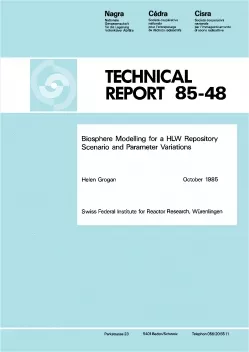
Technical Report NTB 85-48
Biosphere Modelling for a HLW RepositoryScenario and Parameter Variations
In Switzerland high-level radioactive wastes have been considered for disposal in deep-lying crystalline formations. The individual doses to man resulting from radionuclides entering the biosphere via groundwater transport are calculated. The main recipient area modelled, which constitutes the base case, is a broad gravel terrace sited along the south bank of the river Rhine. An alternative recipient region, a small valley with a well, is also modelled. A number of parameter variations are performed in order to ascertain their impact on the doses. Finally two scenario changes are modelled somewhat simplistically, these consider different prevailing climates, namely tundra and a warmer climate than present.
In the base case negligibly low doses to man in the long-term, resulting from the existence of a HLW repository have been calculated. Cs-135 results in the largest dose (8.4 × 10-7 mrem/y at 6.1 × 106 y) while Np-237 gives the largest dose from the actinides (3.6 × 10-8 mrem/y). The response of the model to parameter variations cannot be easily predicted due to non-linear coupling of many of the parameters. However, the calculated doses were negligibly low in all cases as were those resulting from the two scenario variations.
